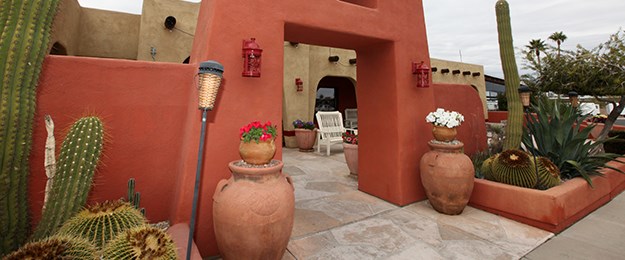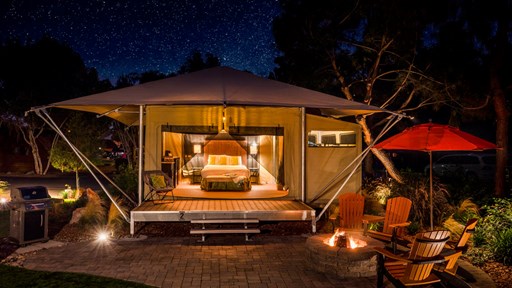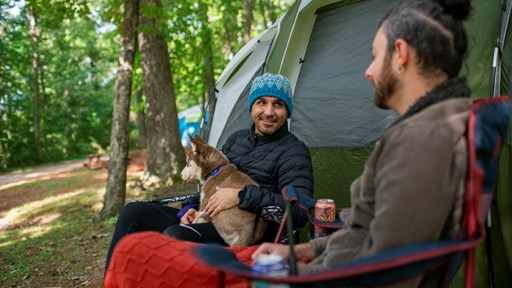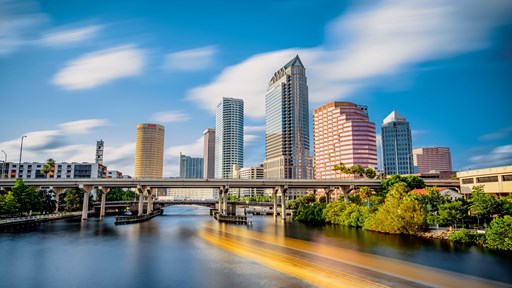By Chris Epting
Day 1 in the Desert
As soon as you pull into the Tucson/Lazydays KOA, you know that something is special. Now, it’s only been a KOA for about a year, but they’ve already done a really nice job transforming the place into one of our beloved yellow beacons along the road.
But what is unique is that every single pull-in spot available on the property comes with its own citrus tree!
What a wonderful way to start a two-day adventure in the desert, picking fresh grapefruits, lemons, limes and oranges. There are even several olive trees scattered about on the property.
If you’ve never been to Tucson, it is well worth a trip. Phoenix, a couple of hours drive to the north, gets an awful lot of attention (especially during spring training, now that many pro baseball teams have relocated there). And it is a lovely city. But for me, Tucson is a true gem. It’s a small and intimate city that is blessed with an abundance of rich historic sites and wonderful heritage. And whatever your age or interests, there is an abundance of things to do in Tucson that will make you feel as if you’ve discovered one of America’s best-kept secrets.
Why not start (after some fresh squeezed orange juice at your campsite) with an early morning visit to Colossal Cave? It’s only about 15 minutes away from KOA and it’s a fascinating place that harkens back to classic roadside nostalgia and Americana. Tucson temperatures are comfortable in the winter and spring, barely nosing up into the 80s. Of course, summertime can make one feel like an adobe brick being baked, so what better place to explore than a cool 70° cave? There’s a small museum at the entrance and you never have to wait longer than 30 minutes for a guided tour that includes many classic stories and geological facts about the impressive, mazelike cave that’s been seen in several films, and was used more than once as a robber’s roost (you may even see some of the five species of local bats fluttering around).
After your cave tour, it’s only about another 20 minutes to Saguaro National Park — home to the nation’s largest cacti. These majestic plants are arguably the most iconic emblems of the American West, and the park (one of two Saguaro National Park locations in the area) takes you deep into the heart of where these green giants thrive. Whether you drive the seven-mile loop or decide to get out and enjoy hiking some of the well-maintained trails, this is a desert experience that’s educational, organized and quite hypnotic. And keep your eyes trained for Gila monsters and other native creatures. The Saguaros, like local natives themselves, each seem to be conveying some story through those remarkable tube-like arms.
After a few hours of exploring the park, it will most likely be early afternoon and so I suggest a stop back at the KOA for some time in the very large, comfortable and refreshing swimming pool. It’s a good chance to refresh and recharge and there is also a wonderful restaurant at this KOA called Florizona, where you can have lunch.
For the last part of the day, I suggest the approximately 20-minute drive to the San Xavier del Bac mission. Dating back to 1692, the present mission building was constructed in the late 1700s. It is referred to as “the White Dove of the desert” and it is quite simply a stunning piece of architecture that almost feels out of place. It appears ancient and European in many ways; elegant, simple with a Moorish-inspired design. It also has a great sense of mystery as it rises out of the desert, visible for miles as you approach it. There is just nothing else quite like it in this country. You can tour the mission, and there’s an interesting museum and gift shop. Native Americans sell their wares and local foods adjacent to the mission and so the air is fragrant with the aromas of scented charcoal, spiced meats and home-baked breads.
And then at the end of touring this exquisite and historic Spanish mission, the time will most likely be right to enjoy a jaw-dropping Arizona sunset. There are a number of small hills surrounding the mission that serve as perfect perches to take in the multicolored, classic desert light show against purple mountains as day draws to an end.
Tomorrow during our visit to KOA Tucson, we will visit some other special landmarks while also closing the day at a unique local spot that’s perfect for becoming one with the sunset.
When my son and I made it back to KOA once the sun had set, we swam once more as the last streaks of crimson, purple and pink faded away, replaced by a magnificent blanket of stars against black. Our little oasis in Tucson. Or make that, KOAsis.
Day 2 in the Desert
Our second day in Tucson is no less interesting or varied than day one. We wake up early, just before dawn to juice some of the oranges that we picked the day before. Again, it can’t be overstated how wonderful it is to have a citrus tree at literally every campsite at the Tucson/Lazydays KOA.
Like day one, this one will also end with a beautiful spot to watch an exquisite desert sunset. But today, we first set out for the Arizona-Sonora Desert Museum. And don’t be thrown by the word “museum.” Yes, there are some spectacular displays of historic and cultural significance. But there is so much more. The entire complex is a living and breathing cross-section of the desert landscape. There are animals, there is an aquarium and there are numerous trails and nature paths that walk you through, step-by-step, every single aspect of this magical desert. After several hours, you will have learned an enormous amount of natural history and earth science — while also taking in spectacular flowers and of course, cacti.
This is an attraction that blends into the desert so seamlessly that, at times, you’ll forget you’re even at the Arizona-Sonora Desert Museum. But you are. They have created cool and mysterious caves to explore that display all sorts of mineral and geological artifacts, and helpful docents are stationed throughout the landscape to provide more interesting information. As well, the restaurant features many authentic local dishes including a delicious breast of chicken with prickly pear sauce.
Just down the road from the museum is a loop trail from the second location of the Saguaro National Park where you will be able to get out and observe ancient petroglyphs right along the trail, close enough to touch (though that is not a good idea).
As suggested in part one of our Tucson tour, by early afternoon it would be a good idea to go back to the KOA for a refreshing dip in the pool before continuing the adventure.
For the afternoon, the Tucson Visitors Bureau has published a terrific walking tour called the Presidio Trail. The map is free and can be picked up at many locations around the city (or you can download one here). Following a turquoise stripe on the map, you will get to experience many compelling historic sites around Tucson, including the Hotel Congress where gangster John Dillinger and his crew holed up before being arrested, a free transportation museum (where the locomotive from “Oklahoma!” is on display), historic churches, theaters and more. Twenty-three sites in all are included and the tour should take you between two and three hours.
By this time, you will of worked up an appetite and what better reason to head over to the original El Charro Café at 311 North Court Avenue. Open since 1922, this is the nation’s oldest Mexican restaurant in continuous operation of the same family. They proudly serve traditional northern Mexican/Sonoran-style food, along with innovative Tucson-style Mexican. Interestingly, this is where the chimichanga was invented after a burrito was inadvertently dropped into a deep fat fryer in 1922. The restaurant is inside the old family house, and if you visit, ask to see downstairs. This was the original area for the restaurant back in the 1920s and today hosts only larger groups. But notice the stone that the walls are made of. It was mined from Sentinel Peak, otherwise known as “A Mountain.” Back in 1914, a student at the University of Arizona in Tucson spearheaded the project of creating the giant “A” atop Sentinel Peak as a class assignment. Visible from many places throughout Tucson, I would suggest a visit to the top of the mountain to enjoy a sunset after dinner.
There is a road that leads to the top where you can park your car and make the final ascent to the actual 70-foot painted letter on foot. It is not a difficult climb and once you reach the summit you will enjoy not just cool breezes, but arguably the most spectacular view in the area. Take a seat on the boulder-strewn summit as sunset approaches and enjoy the often soft pink and purple light that is cast against the mountains and the city. It’s the perfect way to end another busy day in the desert before heading back to KOA for perhaps a late-night swim and certainly some more citrus picked fresh from the veritable orchard that exists there. As usual, our KOA serves as the perfect base camp; becoming particularly oasis-like in a beautiful desert city like Tucson.
###
Chris Epting is an award-winning journalist, travel writer and author of 25 books including “Roadside Baseball” and “James Dean Died Here – the Locations of America’s Pop Culture Landmarks.” And he loves all of KOA.

























